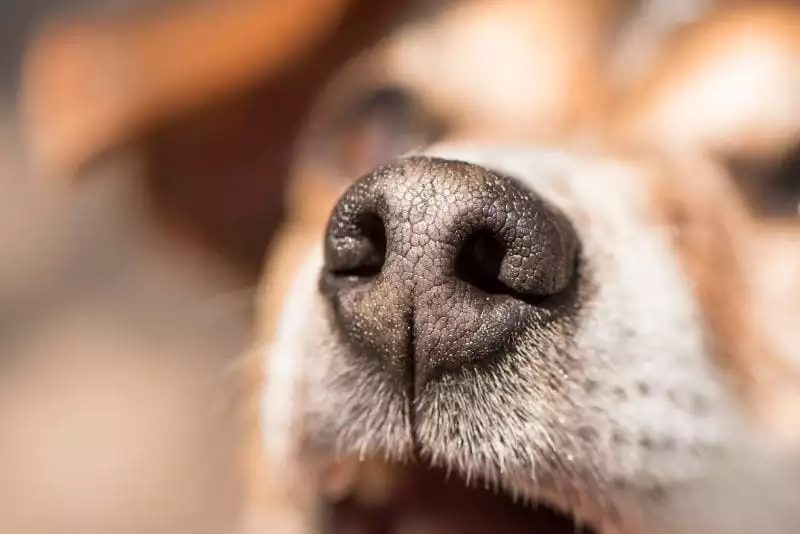Dog Nose Slits: What do They do?

A dog’s nose is truly a super power. The canine sense of smell is 10,000 to 100,000 times better than ours. To get a visual of this, imagine a warehouse full of two million apples. A dog can smell the one bad apple in that warehouse and take you directly to it.
Dogs have also been trained to detect cancer cells, changes in body chemistry that indicate an oncoming seizure, drugs, toxic waste, and, of course, their favorite toy. What’s more, once they learn a smell, they remember it for a very long time.
What exactly about the canine nose makes it so special? One reason is dog nose slits. Have you ever noticed them and wondered what they are? Keep reading for more information about these powerful little features.
Dog Nose Slits Explained
When we inhale and exhale, the air we breathe in is mixed with smells around us. When we exhale, these smells are also expelled along with air.
When a dog inhales, the air gets separated into two parts. Some air stays in the back of the nose for scent analysis, and some goes to the lungs. Exhaled air is released through the slits in the side of the nose so that outgoing air doesn’t dilute new scents coming in through the nostrils. The slits make it possible to give the dog a steady stream of air spanning several respiratory cycles.
Dog nose slits also come in handy when a dog wiggles each nostril independently to take in more scents. This action makes it possible for dogs to tell which nostril a smell entered. Ever see a dog weaving along the ground as they search for smells and follow a trail? They’re using their nose slits to pinpoint the exact location of a smell.
The Amazing Canine Nose
Once a dog has been trained to isolate a specific scent, they can find it regardless of other surrounding scents. Dog nose slits enhance their sniffing ability and help them to distinguish 30,000-100,000 different types of smells (humans can only discern 4,000-10,000 smells).
Because dog noses are so sensitive, it’s important to keep them healthy. Up to 19 different diseases can affect the canine nose, including cancer, hypothyroidism, and diabetes.
Regularly scheduled preventive care exams are the best way to find small problems before they become more serious. If you see nasal discharge or are worried about your dog’s health, please call Schertz Veterinary Hospital right away, so we can keep your dog’s nose in tip-top condition.
Share This Article
About
Schertz Animal Hospital
Since 1976, Schertz Animal Hospital has offered the greater San Antonio area outstanding pet care. Our state-of-the-art animal hospital in Schertz, TX compliments our stress-free handling and experienced veterinary staff. Make an appointment online or give us a call at (210) 659-0345 today!
